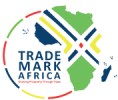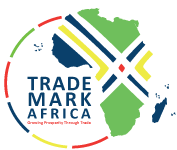A giraffe on the African Savannah with the tall buildings of a city on the horizon is often the picture many people think of when imagining Africa. They may not know it but the scene is from the Nairobi National Park, a park on the outskirts of Nairobi, Kenya’s capital city. The Kenya Wildlife services on their website call it “The Worlds Wildlife Capital”. It’s a place I had for many years refused to go to, I was happy to go to Kenya’s coast or its Maasai Mara game reserve but I thought that a game reserve so close to the city was somehow not authentic. Till one year I was persuaded to visit and realised that it’s very authentic, a great place and very convenient being so close to the city. For some of the wildlife such as the lions, sometimes a bit too convenient as they can sometimes get out of the reserve and into the city with disastrous results both for the people living in the suburbs close to the reserve and for the lions.
This convenience helps Kenya attract over 1.6 million tourists a year and contributes between 4% and 6% of the country’s GDP according to the World Travel and Tourism Council. Tourism is expected to grow in Kenya with around 13 new hotels planned over the next five years, with 2 400 rooms and brands such as Ramada, Radisson, Marriot and Móvenpick investing. These investments by the private sector are supported by a government that is building out infrastructure to ensure growth in the economy. For years we have seen better roads especially in Nairobi, improvements in electricity generation capacity and now we have seen the opening of the country’s largest infrastructure project for decades the Nairobi-Mombasa Madaraka Express Railway. This growth is important in a country where around a quarter of GDP is from agriculture and where much of it is dependent on rain, rainfall which in 2016 was well down on normal. While a quarter of GDP comes from agriculture around 75% of Kenya’s workforce is employed in agriculture. With so many people’s income tied to agriculture the drought is knocking consumers purchasing power as agricultural production declines for the first time in eight years. The other side of the drought is the higher food prices and electricity issues as Kenyan Hydro power is in short supply and more expensive electricity produced by diesel generators is taking up the slack.
The drought induced higher food and electricity prices has pushed inflation up to 12% the good news is that its trending down and is now around 9% and the Central Bank has held rates as they expect it to decline further but also because the central bank is aware that the economy is growing slower than they would want it to at 5% when it’s been at 8% before.
They are also aware that much of this growth is a result of governments capital expenditure such as the recently open Madaraka Express. Gross capital formation in the past few years is on average over 20% up from the long run rate of 18%. This investment in the future thought does come at a cost as the government deficit is doubled from its 5% level pushing government debt to 50% of GDP from 40%. This deficit should reduce as projects move from the building stage to the operating stage. This rail link opened 18 months early forms part of the revitalisation of the railroads that will also link Kenya to its landlocked neighbours to the West. The link also forms part of China’s One Belt One Road initiative. Construction projects such as this which is Kenya’s largest infrastructure project in decades are holding up GDP growth, as agricultural output declines for the first time in eight years. Building infrastructure will encourage other investment and spur growth to higher levels once agriculture recovers growth in industry and tourism become growth on to of existing capacity.
The Madaraka Express is an example of where the country wants to go, the 4-hour trip on the modern train is cheaper than an airline ticket to Mombasa around 15% of the cost and after factoring in waiting times at the airports not much longer it’s also much safer and faster than by bus. The stations look like airports and the attendants on the train look like air hostess in their smart uniforms. The trains with 1000 passengers per train are full both with locals and tourists. And tickets can be bought using M-Pesa probably the most successful e-cash/mobile banking solution in the world.
This combination of innovation in items such as M-Pesa, infrastructure projects to link Kenya to the region and political developments where elections are well run, such as this last election where observers from Africa, the United States and Europe give them a clean bill of health are driving investors love for the country. Not that there was not an unfortunate attempt to make mischief before the election but the outcome has been hailed as a well-run, free and fair election, this though has not stopped the loser going to court to challenge the outcome. But even this move is a sign of a maturing political landscape. The result is that investors continue to invest in the country such as the deal concluded just before the elections where in a deal estimated at $100m the Abraaj Group acquired the Java House casual dining chain. This locally grown Kenyan business now plans to expand into Uganda and Rwanda.
Source: Africa Global Fund
Disclaimer: The views and opinions expressed in this article are those of the authors and do not necessarily reflect the official policy or position of TradeMark Africa.















